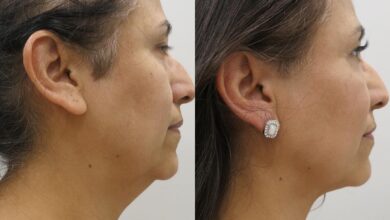Beyond the Prescription: Understanding the Mechanisms and Benefits of Muscle Relaxants
One class of drugs called muscle relaxants is frequently recommended to treat pain, discomfort, and spasms in the muscles. Although the term “muscle relaxant” is widely known, little is known about the underlying mechanisms, therapeutic benefits, and wider effects on health and wellness of these drugs. With a focus on muscle relaxants, this article will examine their many forms, modes of action, possible adverse effects, and usage considerations.
How Do Muscle Relaxants Work?
Generally speaking, there are two primary types of muscle relaxants: those that operate centrally and those that act peripherally.
Centrally Acting Painkillers These drugs function by having an impact on the central nervous system (CNS). They lessen muscular tone and ease spasms by slowing down neuronal activity in the brain and spinal cord. Clofen, carisoprodol, and cyclobenzaprine are typical examples.
Less frequently used, peripherally acting muscle relaxants work directly on the muscle by obstructing the nerve impulses responsible for muscle spasms. One well-known example is dantrolene, which is mostly used to treat diseases like spasticity and malignant hyperthermia.
Mechanisms of Action
The distinct modes of action of muscle relaxants are responsible for their effectiveness.
Centrally Acting Painkillers Gamma-aminobutyric acid (GABA), a neurotransmitter that lowers neuronal excitability throughout the nervous system, has inhibitory effects that are enhanced by the majority of these drugs. These drugs successfully prevent the overactivity of motor neurons, which cause muscular contractions, by raising GABA activity. Muscle spasms and rigidity may be lessened as a result of this inhibition.
Agents of Peripheral Muscle Relaxation For example, dantrolene functions by obstructing the muscle cells’ sarcoplasmic reticulum’s ability to release calcium ions. Dantrolene efficiently relaxes the muscle by preventing the release of calcium, which is essential for muscular contraction.
Advantages of Relaxation Agents
The advantages of muscle relaxants go beyond only reducing spasms in the muscles. Among the principal benefits are:
1. Pain Relief:
Severe pain is frequently linked to spasms of the muscles. Muscle relaxants can help lessen general discomfort by reducing these spasms, which can be especially helpful in disorders like tension headaches, fibromyalgia, and chronic back pain.
2. Increased Mobility:
These drugs can increase range of motion and support physical therapy or rehabilitation efforts by releasing tense muscles. For people healing from operations or injuries, this is essential.
3. Improved Sleep Quality:
Many people with chronic pain or muscular spasms have trouble falling asleep. These drugs work by encouraging muscle relaxation, which enhances the quality of sleep—a critical component of general health and healing.
4. Supplementary to Other Therapies:
When taken with other medications, such as nonsteroidal anti-inflammatory drugs (NSAIDs) or physical therapy, muscle relaxants are frequently prescribed. The results of treatment may be improved by this multifaceted strategy.
5. Control of Particular Conditions:
Muscle spasticity can be a symptom of a number of diseases, including multiple sclerosis, cerebral palsy, and spinal cord injury. Muscle relaxants can be very helpful in controlling these symptoms and enhancing life.
Thoughts and Adverse Reactions
Although there are many advantages to using muscle relaxants, there are also risks involved. Typical adverse effects consist of:
1. Drowsiness:
A number of centrally acting muscle relaxants have sedative properties that may make it difficult to go about everyday tasks and obligations. When taking these medications, patients are frequently cautioned not to drive or operate heavy machinery.
Physical dependency and tolerance can result from long-term use of some muscle relaxants, requiring greater doses to have the same effect.
2. Symptoms of Withdrawal:
Abruptly stopping muscle relaxants, particularly after extended use, can cause withdrawal symptoms as heightened twitchiness, anxiety, and sleeplessness.
3. Drug Interactions:
Alcohol and opioids, among other drugs, can interact with muscle relaxants to cause potentially harmful adverse effects. Patients should disclose all of their drugs to their healthcare professionals at all times.
4. Individual Variation:
Genetics, general health, and the existence of additional medical disorders are some of the factors that can significantly affect the efficacy and adverse effects of muscle relaxants in different people.
The Significance of Lifestyle and Complementary Therapies
The advantages of muscle relaxants can be enhanced by lifestyle modifications, complementary therapies, and pharmaceutical interventions. Several successful tactics consist of:
Targeted physical therapy has the potential to decrease the requirement for muscle relaxants by strengthening and increasing muscular elasticity.
1. Mind-Body Methods:
These holistic approaches to muscle relaxation include yoga, tai chi, and meditation. They can also improve relaxation and lower muscle tension.
2. Heat and Cold Therapy:
While cold therapy helps numb pain and reduce inflammation, heat therapy helps relax tense muscles. Muscle relaxants can be used in conjunction with these techniques to maximize relief.
3. Appropriate Diet and Hydration:
A balanced diet and adequate hydration can promote the general health and function of muscles.
In summary
Muscle relaxants have a number of advantages that can enhance many people’s quality of life, including the ability to manage muscle spasms and discomfort. Patients and healthcare professionals can use them wisely if they are aware of their possible advantages and modes of action. However, given the possible adverse effects and the significance of a comprehensive treatment plan, it is imperative to use caution when using these medications. Incorporating lifestyle changes and complementary therapies with muscle relaxants can offer complete relief and promote long-term health. To ensure that treatment approaches are customized to each patient’s needs and health conditions, always seek medical advice before beginning or stopping any drug.
In conclusion, muscle relaxants are useful instruments in a larger plan for treating problems relating to the muscles, speeding up healing, and improving general health; they are more than just prescription drugs.





